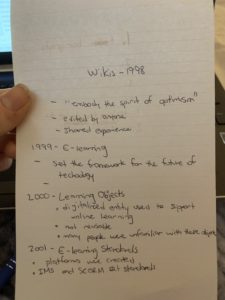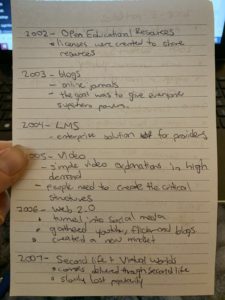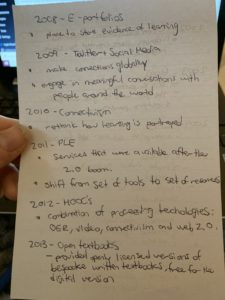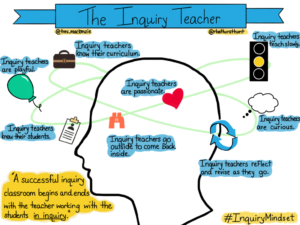After reviewing the readings from this week, I noticed a common theme. The articles talked about the importance of student-centred learning and promoting higher order thinking skills. I will be discussing 3 of the learning theories; cognitivism, constructivism and connectivism, from the article “Teaching Online : A Guide to Theory, Research, and Practice” as I think they are critical components to teaching online.
Fontana said that the cognitivist theory focuses on the student being “an active agent in the learning process” (Learning theories and online learning). A cognitivist would focus on conceptual learning vs procedural learning. For instance, when I teach math to 5 year old’s online I ask them to find objects in their house to count vs telling them to add 5 + 2. I think this type of teaching is much more meaningful to the learner as it allows them to be actively engaged in the learning. One of the online teachers at my school has created interactive google slides for the students to participate in. On the slide she has created icons which will take the students to a video, book, website and activity on the topic they are learning about. She often will create 3 different slides for her students to choose based on their interests. I think this type of model will stay after the pandemic as it can be a very useful tool for inquiry based learning.
Constructivists focus on finding meaning and connecting to the learning and the environment. Victor Frankl said we can find “meaning through our actions and deeds” (Corey, 2017, p. 130). The goal is to create an environment where students work with their peers to create and answer higher level problems. The use of social pods, blogs, virtual meetings, and other social media platforms throughout the pandemic has allowed students to connect in ways that they hadn’t been exposed to before. I think since many people felt isolated during the pandemic it forced teachers to think about the collaboration piece.
Connectivism drives students to become autonomous and encourages them to take charge of their own learning. I think this model can be beneficial, but it has to be introduced slowly and students should be given more freedom as they begin to understand the inquiry model. Students first need to be taught critical thinking skills and be able to ask good questions. The inquiry model below shows how this type of learning should be structured.
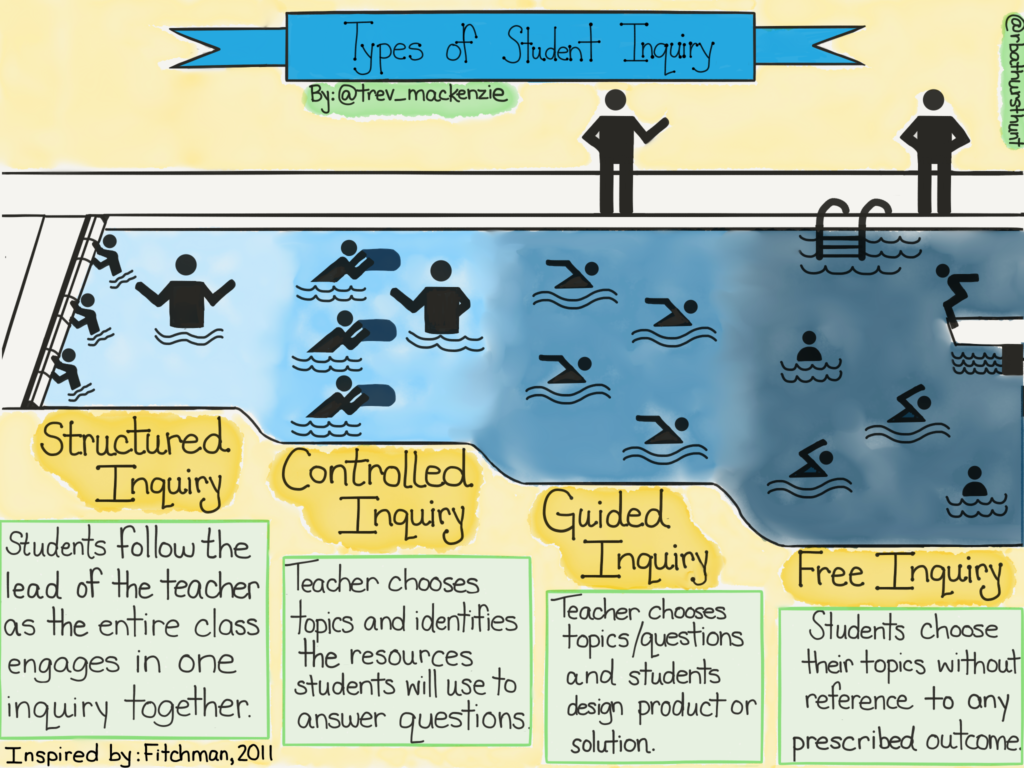
I had an online class where we were told to do an inquiry project on any topic we wanted. Many of us were lost as we had no skills or prior knowledge to engage in inquiry based learning.
Connecting this week’s readings to the article, “25 year of Ed Tech” I think educators should focus on technology that humanizes the learning. This includes; blogs, virtual settings such as skype and zoom, social pods, and flip grid. Flip grid is something I started using throughout the pandemic and I have continued to use it in my classroom as it is a great way to showcase student learning and connect with people around the world. I have noticed that schools have shifted to a more collaborative framework since the pandemic and teachers have been using technology to supplement the learning.
References
Bates, T.(2014). Learning Theories and Online
Learning. [Blog post]. Retrieved from
https://www.tonybates.ca/2014/07/29/learning-theories-and-online-learning/
Bathurst Hunt, R. (n.d.). Home. Retrieved October 17, 2020, from http://rebeccabathursthunt.com/sketchnotes/
Corey, G. (2017). Theories and practice of counseling and psychotherapy (10th ed.).
Cengage Learning.
Major, C. H. (2015). Teaching online: A guide to theory, research, and practice. Baltimore: Johns Hopkins University Press.
Weller, M. (2020). 25 Years of ed tech. AU Press. Retrieved from https://read.aupress.ca/read/25-years-of-ed-tech/section/e69021f2-91b6-4ca4-9d0b-81d3e9748707
